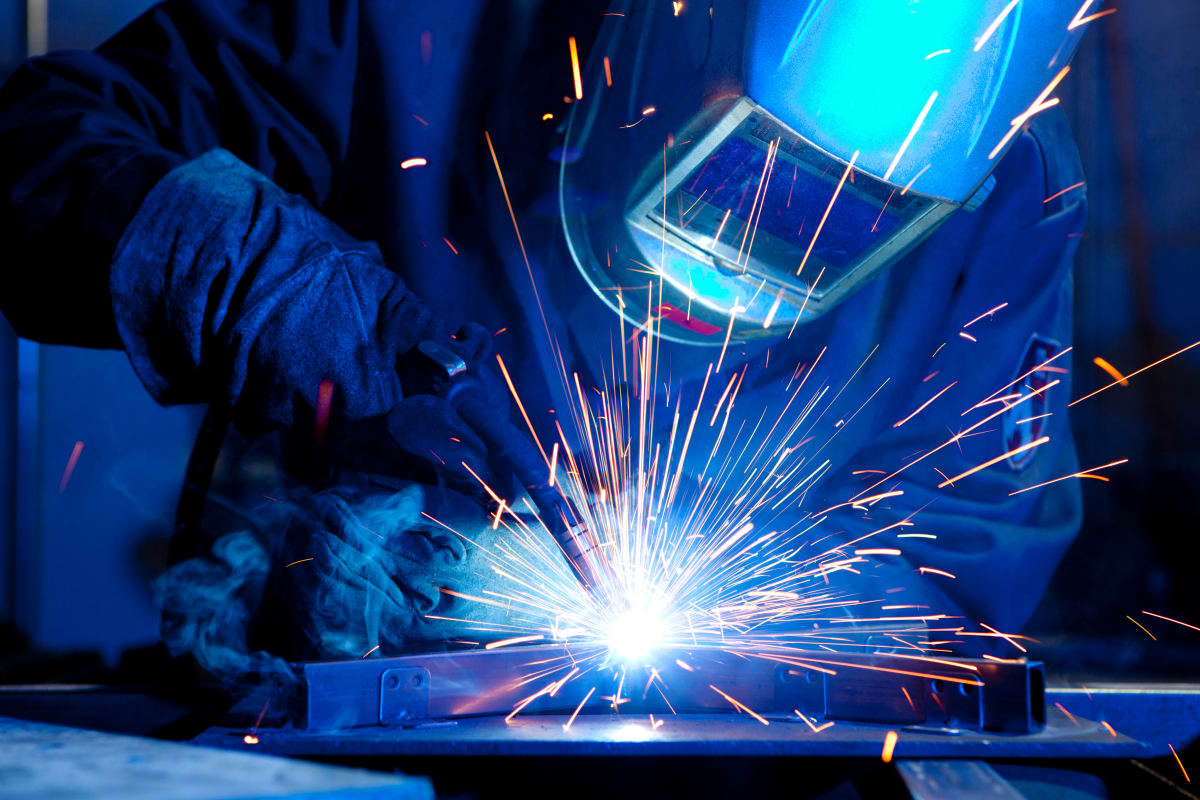From building and construction to automotive, oil & gas, agriculture, and many others, the art of welding is applied in multiple industries. Heat and pressure are used to fuse pieces of metals together, creating a structure with joints as strong as the individual pieces of metal. Welding skills are also used in metal cutting, fabrication, plumbing, soldering, and many other careers. As much as it can generate a significant amount of revenue, however, the welding business is associated with certain hazards and as an entrepreneur in this field; you have a responsibility to ensure that safety precautions are observed all the time. This protects your business from potential lawsuits related to compliance while also protecting your employees, which are one of your greatest assets as far as revenue generation is concerned.
For this reason, owners of welding businesses should put measures in place to ensure that the work environment is as safe as it can get and that their employees observe safety precautions at all times.
On this note, here are some safety precautions a welding business should implement to avoid hazards, starting with a brief look at common hazards in a welding work environment.
Common safety hazards in a welding workplace
As mentioned earlier, welding tasks often expose the worker and other people close by to certain safety hazards. To implement safety precautions as a welding business owner, it’s paramount to be aware of the various hazards and risks posed by welding.
Some of the common ones include:
- Electric shock
- Burns
- Inhaling toxic fumes and gases, which may lead to respiratory illness and eye damage.
- Noise pollution, which may cause ear damage
- Fires and explosions
- Exposure to radiation
In addition to these, welders and other people in the vicinity may also face the risk of physical harms such as cuts, bruises, and impact injury. With these in mind, putting in place measures to minimize or eradicate hazards becomes easier.
Safety precautions to implement
Provide your employees (and visiting individuals) with helmets
As we mentioned earlier, your employees are among the most important assets in your welding business, and ensuring their safety is among the crucial safety measures you can take. Depending on the type, welding helmets can protect a welding worker from various risks, including burns to the head, eye irritation/damage, UV radiation, and physical damage, among others. As can be seen in this post from WeldingPros.net, various types of welding helmets are available on the market, and effectiveness can vary widely from one option to the other depending on the features. For instance, some come with auto-darkening features while others do not. Some come in a sleek design that allows maximum flexibility, with more auto-darkening sensors and light mode shading for maximum eye protection and visibility. By conducting some research and comparing various helmet types and brands, you can easily equip all your employees with options that provide maximum head and eye protection even on a budget. You can even have several units for clients who may visit to get updates on their projects.
Invest in fire-resistant protective clothing
More often than not, welding businesses also face fire risks. Additionally, welders often risk exposure to heat, radiation, and sparks. With fire-resistant clothing, you can reduce your employees’ risk of injuries from these situations. PPE experts recommend going for protective clothing with flap-covered or taped closed pockets and without cuffs. Treated flame-resistant cotton and leather are among the best options when it comes to the material.
Ear protection
Noise is a major safety concern in welding environments, especially where a lot of grinding and beating occurs. This is why investing in fire-resistant ear muffs can be a great measure to avoid risks such as hearing loss and ear injuries.
Gloves and boots
Welding is a handy job that requires the hands to be protected from physical injuries. They can even help minimize the risk of electric shocks. With quality-grade boots and welding gloves, you’ll be protecting your workers from sustaining physical injuries like cuts, bruises, and even burns as they carry out their day-to-day tasks. Gloves should be insulated and boost should have a rubber sole and steel-reinforced.
In addition to the ones highlighted above, other Personal Protective Equipment (PPE) you may want to invest in for your welding business may include respirators, welding goggles, and hand shields for the less demanding tasks. On top of this, you’ll want to ensure your staff makes proper use of their PPE. For instance, they shouldn’t roll up their sleeves or trousers while at work. Welders should always have their gear on and avoid removing the helmet while welding. Before hiring a new employee, it’s also important to ensure that they are well trained for the position and provide on-the-job welding safety training where it’s needed.
Workplace ventilation
To avoid fume-related hazards, the welding workplace should also be properly ventilated. This improves air circulation, thus minimizing the amount of air pollution your employees get exposed to.
Remove flammable material
To avoid fire hazards, welding workplaces should also be free of inflammable and flammable material. Most importantly, you must ensure that you have easily accessible fire extinguishers at designated points within the establishment.
Indeed, welding is one of these businesses that come with certain safety hazards. Without taking the necessary precautions to avoid safety hazards, both business owners and their employees face a surmountable level of risk. Businesses can incur losses, lose great talent, or even get their licenses revoked, whereas employees can suffer severe injuries at work. As they say, prevention is always better than cure.
Author: Samantha Acuna is a writer based in San Francisco, CA. Her work has been featured in The Huffington Post, Entrepreneur.com, and Yahoo Small Business.
Did you know that by forming an LLC you’re dramatically increasing your liability protection by creating a separation between yourself and personal assets? This can filed on your own or through any good LegalZoom alternative.





